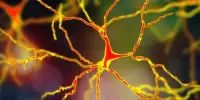ADHD research has been going on for a long time, and scientists have discovered various hereditary markers that may contribute to the development of ADHD. These genetic variations are often linked to brain development, neurotransmitter activity, and other elements of neural biology.
A major worldwide investigation discovered 27 sites in the human genome that include genetic variations that raise the risk of ADHD. This is more than double the number discovered in prior investigations.
Why do some people develop ADHD while others do not? And how early in life, or in the womb, is the germ of ADHD sown? Aarhus University researchers have gone closer to resolving this question in a comprehensive study published recently in the journal Nature Genetics.
The researchers investigated over six million genetic variants in 38,691 persons with ADHD and 186,843 people without ADHD in collaboration with national and international partners. It was possible to discover 27 genetic risk variations for the prevalent neurodevelopmental disease using this method.
The results increase our knowledge of the biological mechanisms underlying ADHD, and they point to specific genes, tissues, and cell types involved in ADHD. This knowledge can be used as a starting point for further studies of the disease mechanisms and identification of new drug targets.
Ditte Demontis
Risk genes are expressed in the brain and neurons
The work is groundbreaking in several ways, including the discovery of more than twice as many risk variations as earlier studies. The phrase “genetic variants” refers to specific changes in the DNA code that are more common in people with ADHD than in people without the diagnosis. Variations in DNA, for example, influence the degree to which a gene is expressed, and thus the amount of protein encoded by the gene.
The researchers got a fresh understanding of which organs and cell types are most affected in ADHD patients by correlating genetic variants – that is, differences in DNA – to specific genes. The study is based on data from the Danish iPSYCH cohort, deCODE Genetics in Iceland, and the Psychiatric Genomics Consortium.
Subsequently, the researchers combined the results with existing data on gene expression in different tissues, cell types, and brain development stages, and they discovered that genes involved in ADHD have a particularly high level of expression in a wide range of brain tissues and early in brain development — in fact already at the embryonic stage.
“This emphasizes that ADHD should be viewed as a brain developmental disorder and that this is most likely influenced by genes that have a major impact on the brain’s early development,” says first author Professor Ditte Demontis of Aarhus University’s Department of Biomedicine. Furthermore, the researchers discovered that the genotypes that enhance the risk of ADHD specifically influence genes expressed in neurons, particularly dopaminergic neurons.
“This is interesting because dopamine plays a role in relation to the reward response in the brain, and because a frequently used form of ADHD medicine works by increasing the concentration of dopamine in different brain regions. Our results indicate that the imbalance in dopamine in the brains of people with ADHD is partly attributable to genetic risk factors,” says Ditte Demontis.

Associated with reduced concentration capacity and short-term memory
According to the professor, ADHD is influenced by numerous common genetic variations, each of which increases the risk somewhat. Indeed, using complex statistical models, the researchers determined that there are approximately 7,300 common genetic variations that raise the risk of ADHD. It’s also intriguing since the vast majority of these polymorphisms (84-98%) also have an impact on other mental diseases like autism, depression, and schizophrenia.
It has already been demonstrated that ADHD risk variations can impair a person’s cognitive ability. To dig deeper, the researchers examined data from an independent dataset of 4,973 persons who had completed extensive neuro-cognitive tests. They discovered in an independent data set that an increased load of ADHD risk variants in an individual’s genome is associated with reduced reading and mathematical abilities, reduced attention, and reduced short-term memory by using information from the new study about which variants increase the risk of ADHD.
“The results increase our knowledge of the biological mechanisms underlying ADHD, and they point to specific genes, tissues, and cell types involved in ADHD. This knowledge can be used as a starting point for further studies of the disease mechanisms and identification of new drug targets,” explains Ditte Demontis.
And the study must be followed up, she emphasizes.
“We have only mapped a small fraction of the common variants that influence ADHD — just 27 of the 7,300 that potentially exist. So there is a need for larger genetic studies,” she says.
International cross-disciplinary collaboration is the way forward
Large worldwide collaborations are essential for uncovering the genetic causes of psychiatric diseases and neurodevelopmental problems, as this involves investigations of tens or hundreds of thousands of people with these conditions. As with the current ADHD study, there are often 100 or more experts involved, each with a different field of expertise, such as genetics, psychiatry, psychology, epidemiology, molecular biology, statistics, bioinformatics, and computer science.
“It is critical to conduct larger studies, involving more people with ADHD, in order to understand more of the genetic and biological mechanisms,” says Professor Anders Brglum of Aarhus University’s Department of Biomedicine and one of the research directors of the Danish iPSYCH project.
“But it is also important to undertake studies that focus on identifying how the genetic risk variants perturb biological processes in the brain cells (the neurons), and their way of joining up and communicating with each other in the brain. For the latter, both brain cells and early developmental stages of the brain, so-called mini-brains or brain organoids, are currently being examined” he says.
















